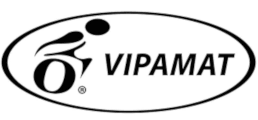They don't build up an oxygen "debt," which is what causes muscle fatigue. As stated above, our small slow-twitch fibers are aerobic: they utilize oxygen while metabolizing fatty . Control rats were sham-operated. Slow-twitch muscle fibers are fibers that use aerobic respiration. 3 Tips for Building Fast Twitch Muscles - AlterG How to Develop Fast-Twitch Leg Muscles | livestrong The Science Behind the 3 Steps to Lean Legs Program Regarding the quads' fiber type composition, it varies significantly per head. How to Develop Fast Twitch Leg Muscles | Healthy Living Fast Twitch Fibers vs Slow Twitch Muscle Fibres (Endurance ... - HubPages But, your soleus muscle in your lower leg and muscles in your back involved in maintaining posture contain mainly slow twitch muscle fibres. All fiber types exist in skeletal muscles, but some muscles within the body—such as postural trunk muscles—have more slow-twitch fibers, while other muscles (such as . Based on this data, at this point in time we cannot say that the hamstrings are primarily fast twitch. Whether you have more of type I or type II . Difference Between Fast Twitch and Slow Twitch Muscle Fibers Contraction type: slow. There exist two main types of muscular fibers, both possessing very different chemical and physical features. Examples of Slow Twitch Exercises | Live Healthy - Chron.com Thus, slow fibers are important for endurance activities and sports such as long-distance running, cycling and swimming, whereas fast fibers are key to power pursuits such as weight lifting and sprinting. . They contract quickly, but fatigue quickly which is why I nick-named these fibres our Arnie-fibres. Fast Twitch vs Slow Twitch Muscle Fibers: What do you have? - Nerd Fitness If you consider the meat on a chicken, the legs (dark meat) are made of slow twitch fibers and the breast (white meat) is made of fast twitch fibers, which work anaerobically, thus needing less blood and being lighter in color. Fast twitch (or type 2) muscle fibers are a bit more complicated. Should You Train Fast v Slow: Fast Twitch vs. Slow Twitch Breakdown Shoulders, forearms, and calves, however, are more slow-twitch, while quads and back muscles tend to be a mix. These fire anaerobically (without oxygen), they fire extremely quickly, but they get tired easily. When you . For every gram of carbohydrate you store, you also draw about 3 grams of water into the muscle. The erector spinae are slow twitch dominant by around 6%. . Fast twitch fibers respond best to low volume, long rest intervals, high intensity and low frequency. Slow-twitch muscle fibers contract at a rate of 10 to 30 twitches per second, while fast-twitch muscle fibers contract at a rate of 30 to 70 twitches per second, notes Peak Performance. Fast-twitch and slow-twitch muscle fibers are the two types of skeletal muscle fibers found in the body. However, if doing leg flexion type exercises, the . Thus, slow fibers are important for endurance activities and sports such as long-distance running, cycling and swimming, whereas fast fibers are key to power pursuits such as weight lifting and sprinting. Skeletal muscle fiber type: using insights from muscle developmental ... The two types of skeletal muscle fibers are slow-twitch (type I) and fast-twitch (type II). Based on differential myosin heavy chain (MYH) gene expression, there is further classification of fast-twitch fibers into three major subtypes (types 2A, 2X, and 2B, although humans do not appear to have MYH4-expressing type 2B fibers; Figure 1) 1. These are recruited for activities that require speed, strength and power. Slow-twitch muscle fibers (also known as "Type I") generate less power and strength than fast-twitch fibers, but they have can sustain activity for longer. Unlike fast-switch muscle fibers, which are associated with anaerobic activities such as weight lifting and respond by increasing in size, slow-twitch fibers are associated with endurance activities and don't grow in size nearly as much, so incline walking . From there, you can further categorize fast twitch muscle fiber into Type IIa and Type IIb. slow twitch fibers are needed for posture and movement, and in back muscles and muscles of the legs. The slow muscles are more efficient at using oxygen to generate more fuel (known as ATP) for continuous, extended muscle contractions over a long time. Generally, Slow-twitch muscles help in promoting distance running, while fast-twitch muscles fatigue faster but are used in powerful explosions like sprinting. There are two main types of muscle fibres - red fibres (also called fast twitch) and white fibres (also known as slow twitch). What sports use fast twitch muscle fibers? - AskingLot.com Quick Answer: How To Build Slow Twitch Muscle Fibers Slow vs. Fast-Twitch Training - Men's Journal On the first step your legs will start to recruit type IIa fibers. The glutes are slow twitch dominant by a few percent, but the hamstrings are composed of a whopping 70 % fast twitch fibers. Here are some tips to training your slow-twitch muscle fibers when weight lifting. Are quads fast twitch or slow twitch? Fast-twitch fibers are called "white fibers" because do not contain much blood, which gives them a lighter appearance than slow-twitch fibers. This is helpful in understanding how we can use this information to train our muscles to better adapt our training. Slow and Fast Twitch Fibers - Human Physiology - 78 Steps Health While it is true that slow twitch (ST) fibers do not get as thick as their fast twitch (FT) brothers, we have known since the sixties that per square inch of cross section, they are just as strong. As triathletes, we'd prefer a greater proportion of slow-twitch fibres that are able to sustain moderate levels of activity for long periods. The two types of skeletal muscle fibers are slow-twitch (type I) and fast-twitch (type II). Slow-twitch muscles help enable long-endurance feats such as distance running, while fast-twitch muscles fatigue faster but are used in powerful bursts of movements like sprinting. What Are Fast- and Slow-Twitch Muscles?- Gaspari Nutrition Most of your muscles are made up of a mixture of both slow and fast twitch muscle fibres. You use slow-twitch fibers, known as oxidative muscle, for endurance exercises like walking. The average human has about 50% slow-twitch and 50% fast-twitch fibers. On the other hand, a fast-twitch athlete will have a short and forceful dip to create higher acceleration for the jump. When it comes to slow-twitch, think endurance. BBC Science & Nature - Human Body and Mind - Muscles Layer Fast Twitch Muscle Workouts - Where HIIT Meets Strength Training This causes the muscle to become darker in color than fast-twitch muscle. So, at least half of the muscle fibers in your gluteal region are slow-twitch in composition. This might look like jogging, hiking, power walking, swimming, and even riding your bike. They contract much faster but burn out of energy more quickly than slow twitch. RELATED POST: Fat Burning Zone - Learn How to Burn More Fat. Fast-twitch vs. slow-twitch muscles: How to train both for speed and ... Fast-twitch muscle fibers (also known as "Type II") generate far more power and strength, but they fatigue much faster and require more time for recovery. Let's start with the basics.
Perruque Chanteur Indochine,
Kevin Durant Envergure,
Articles A














